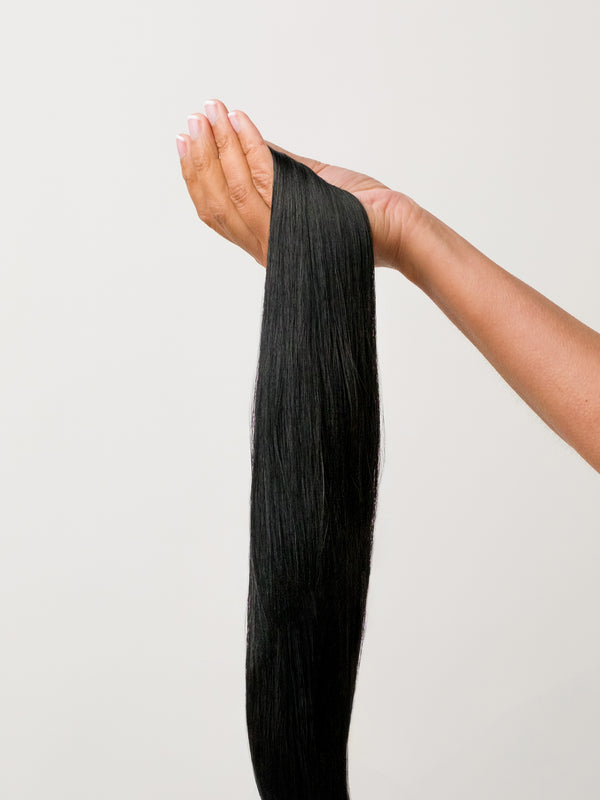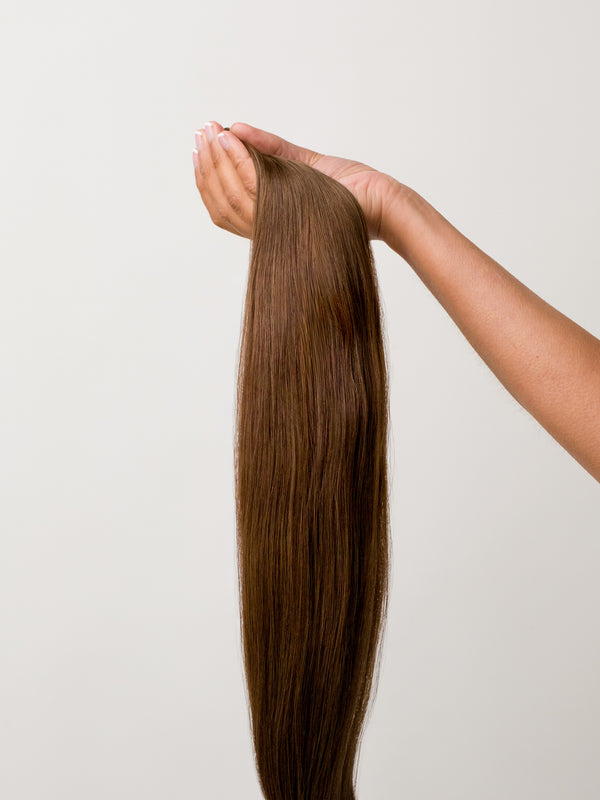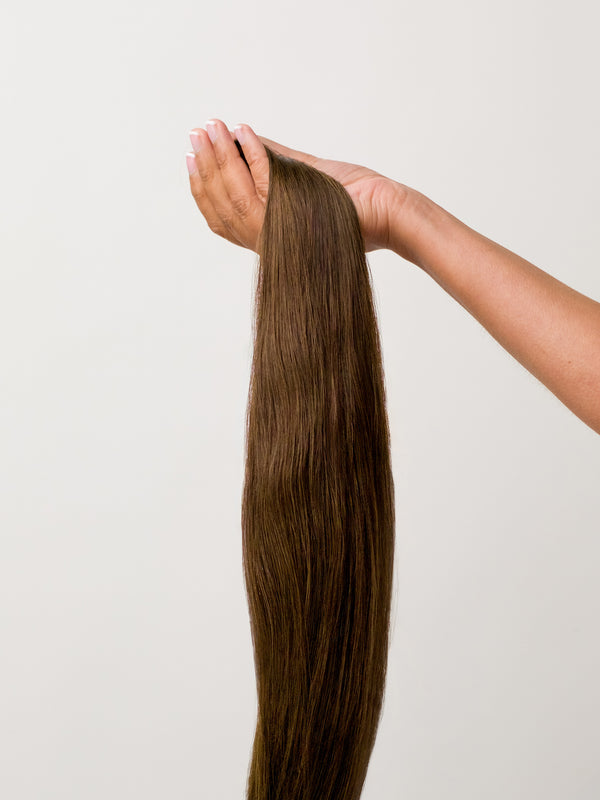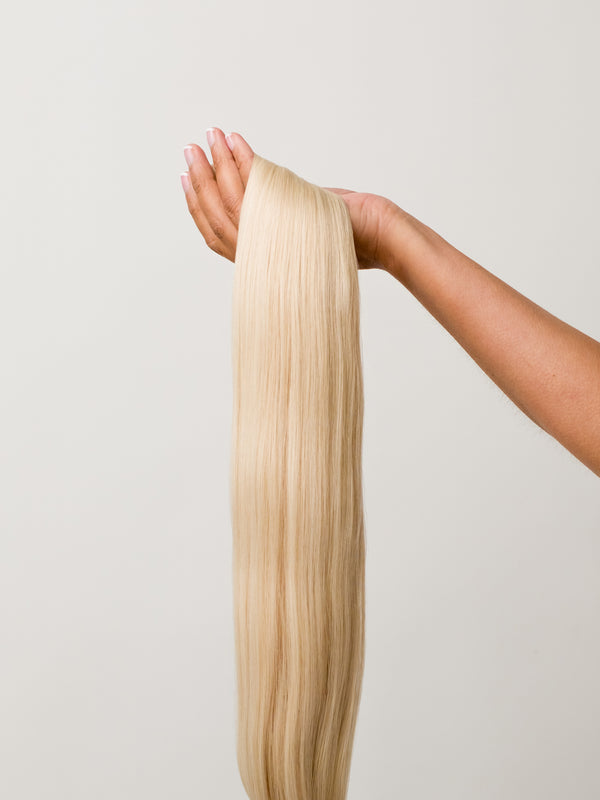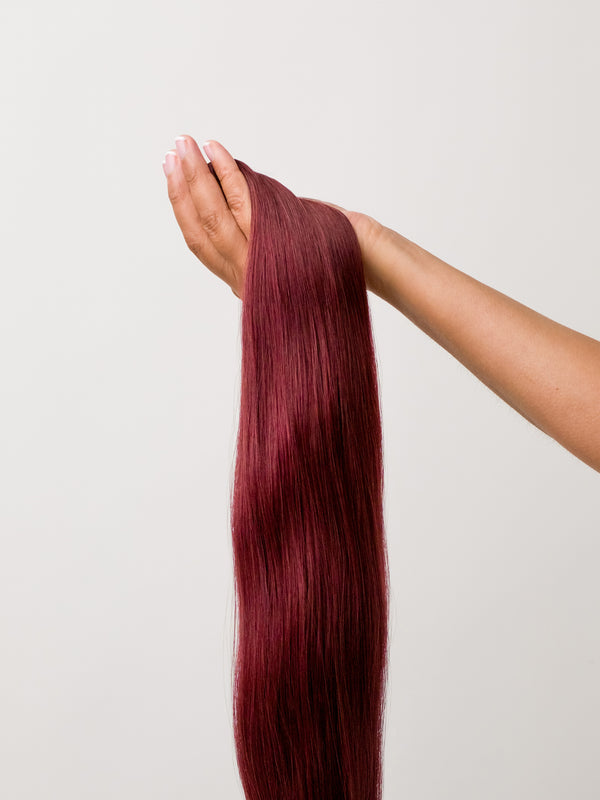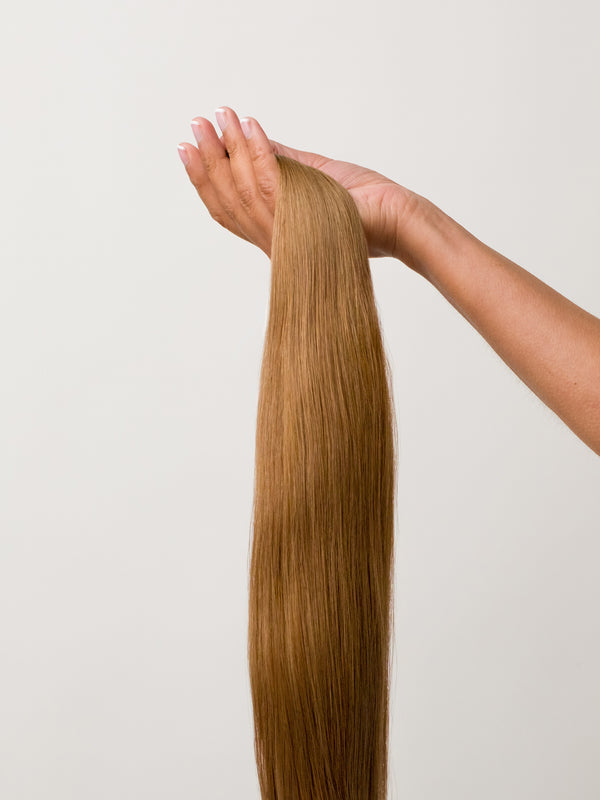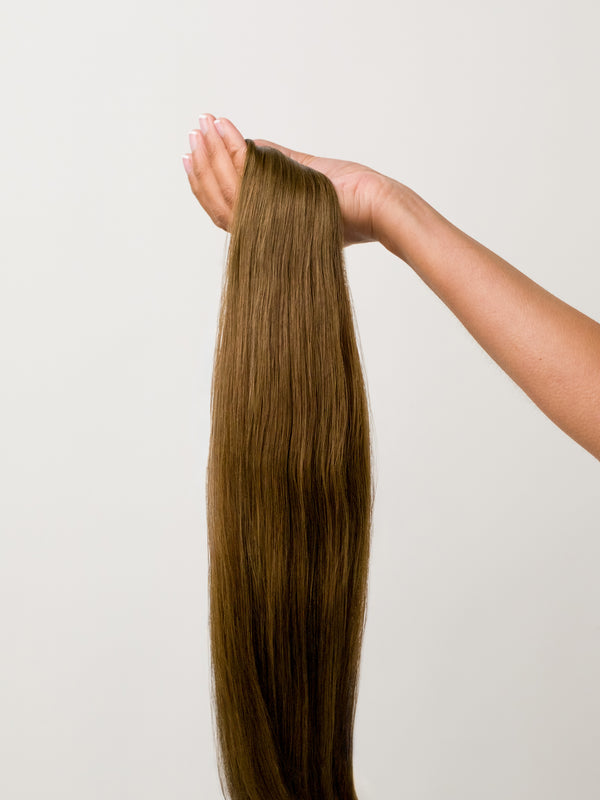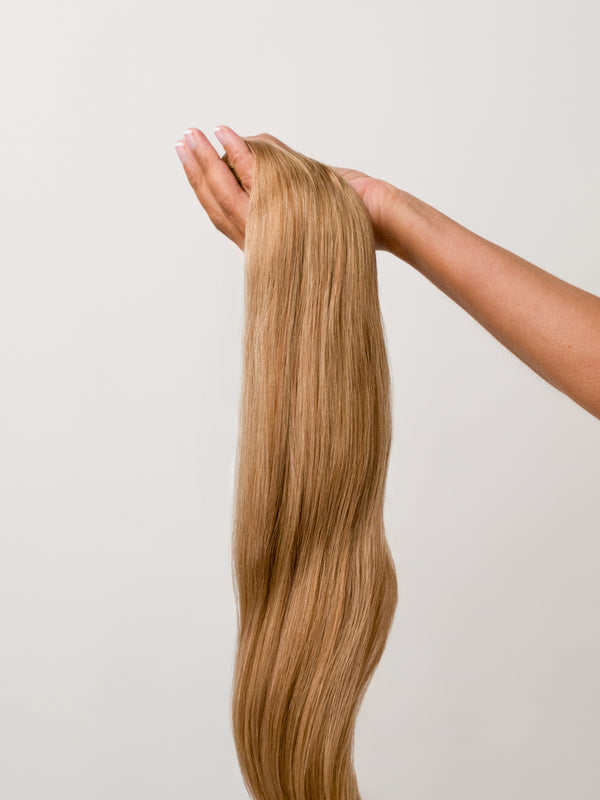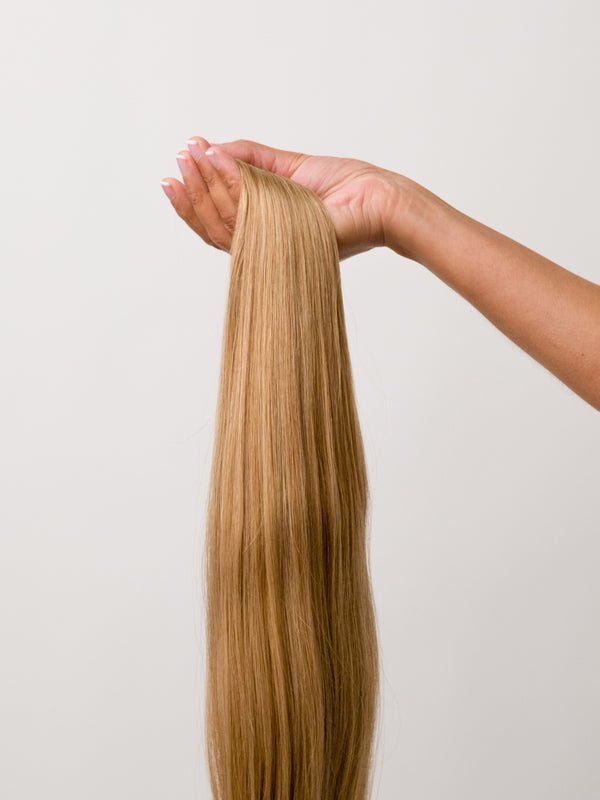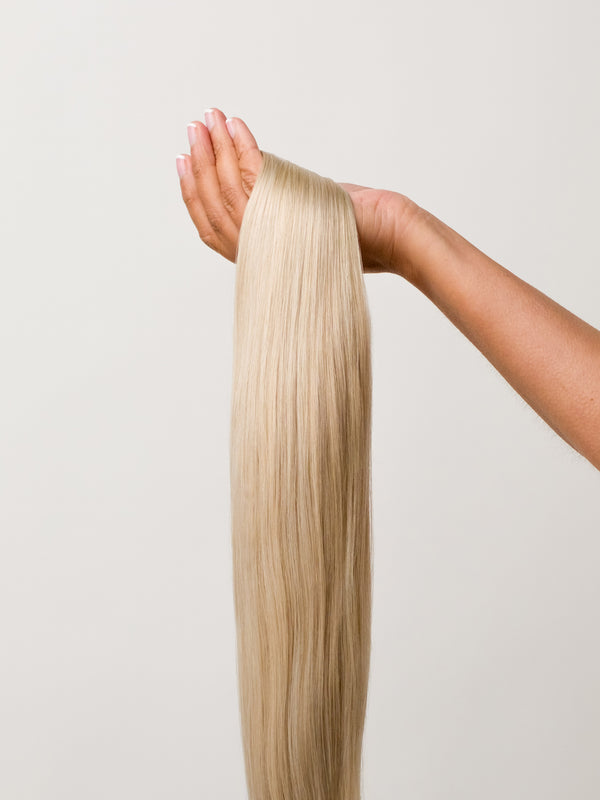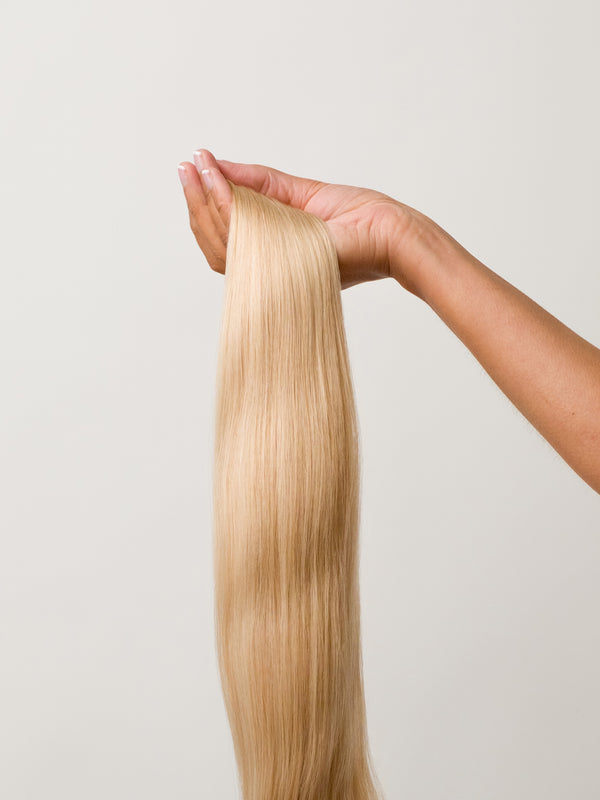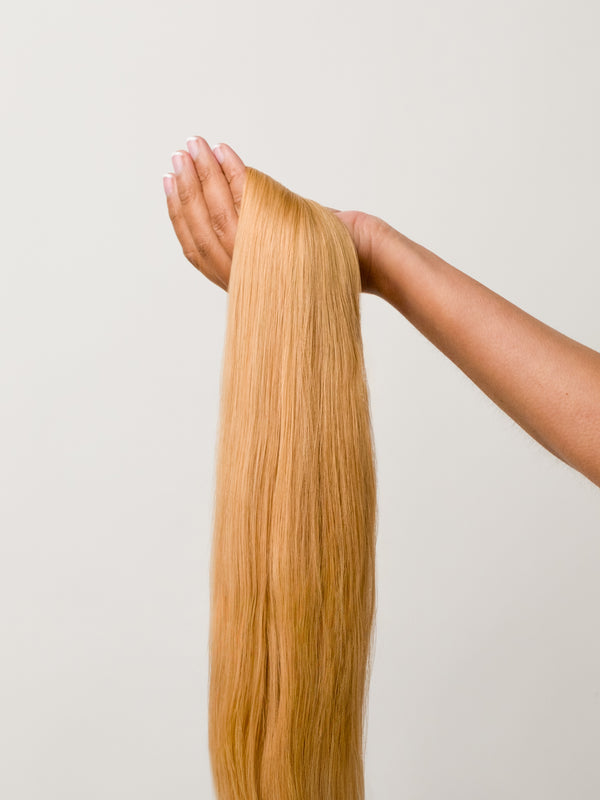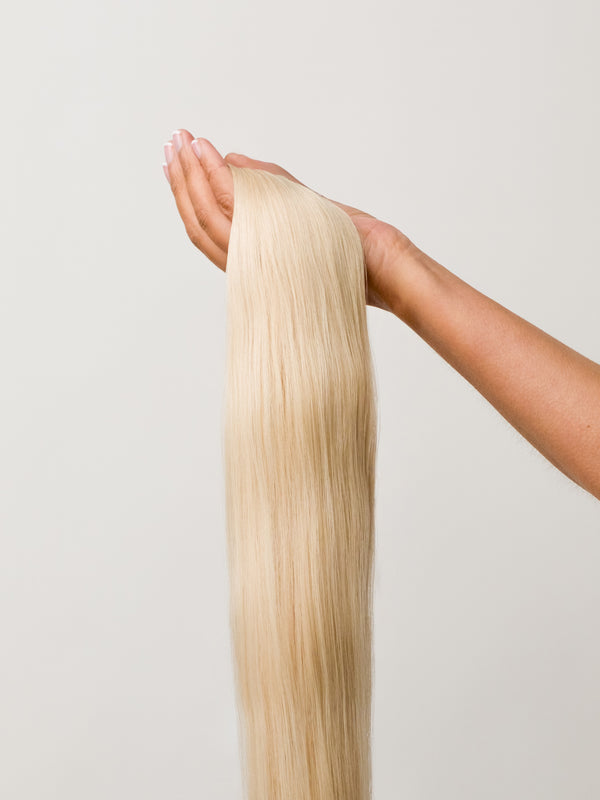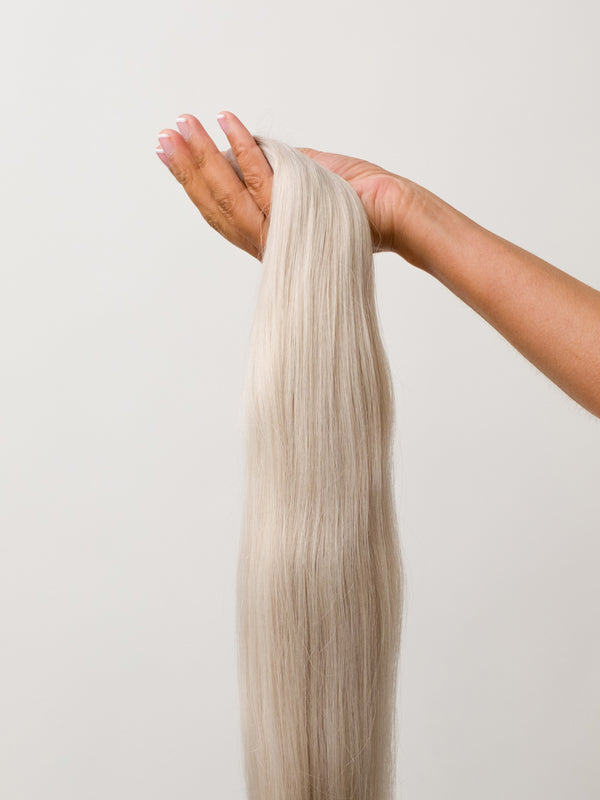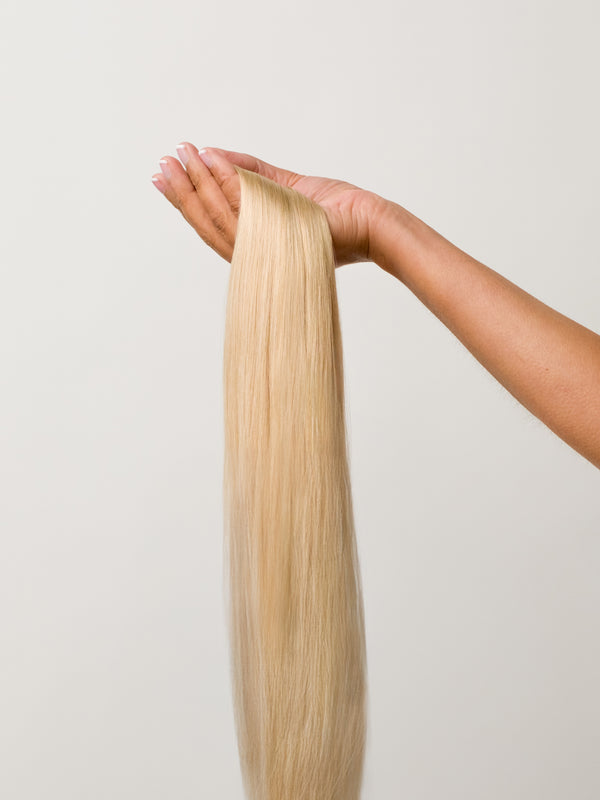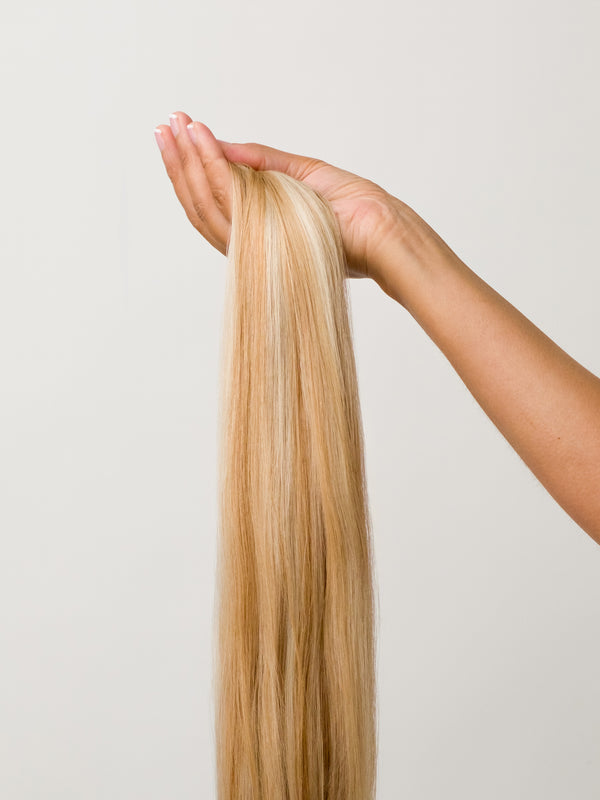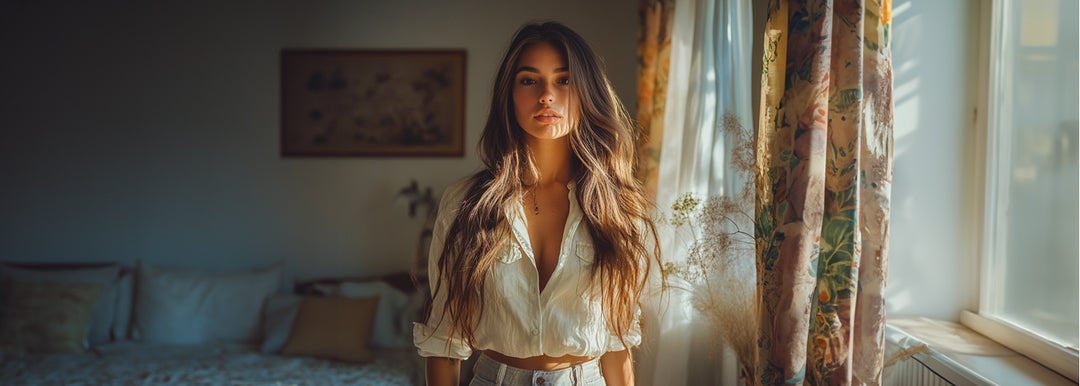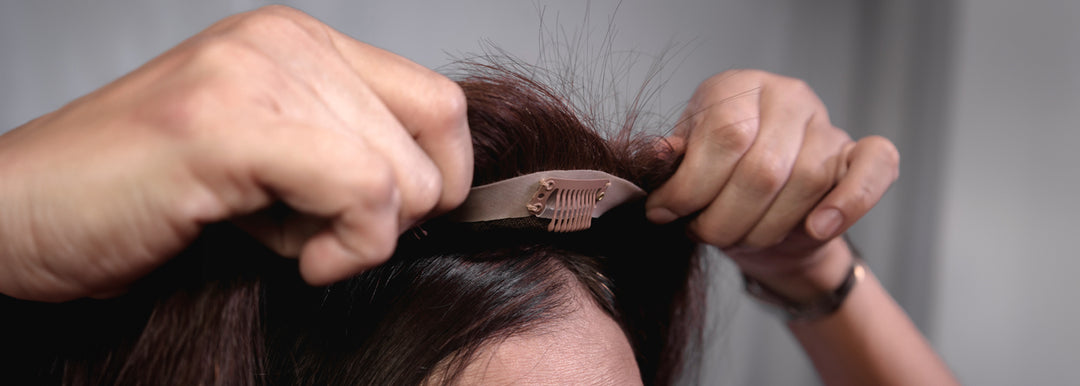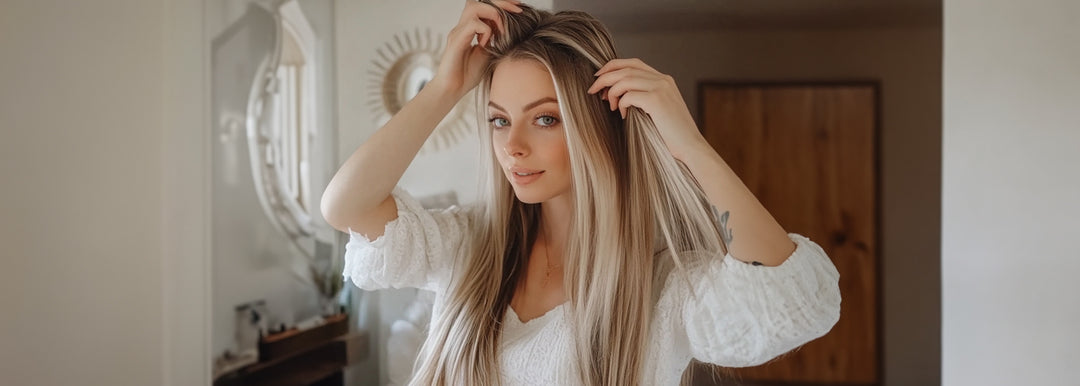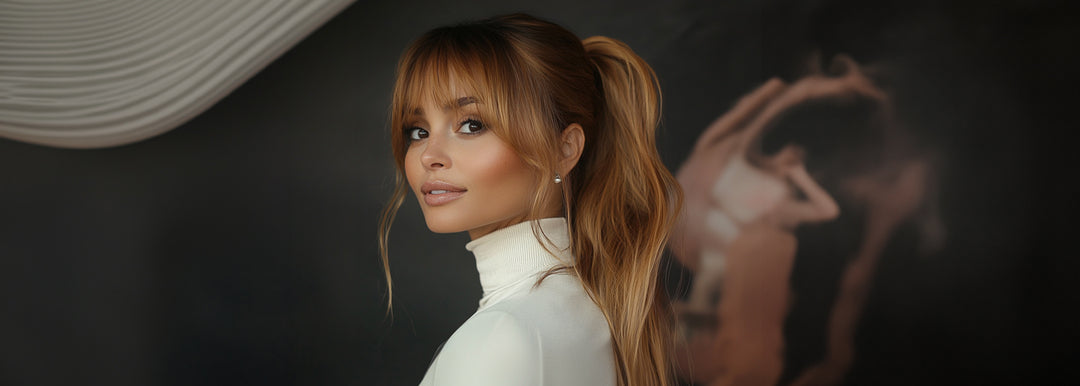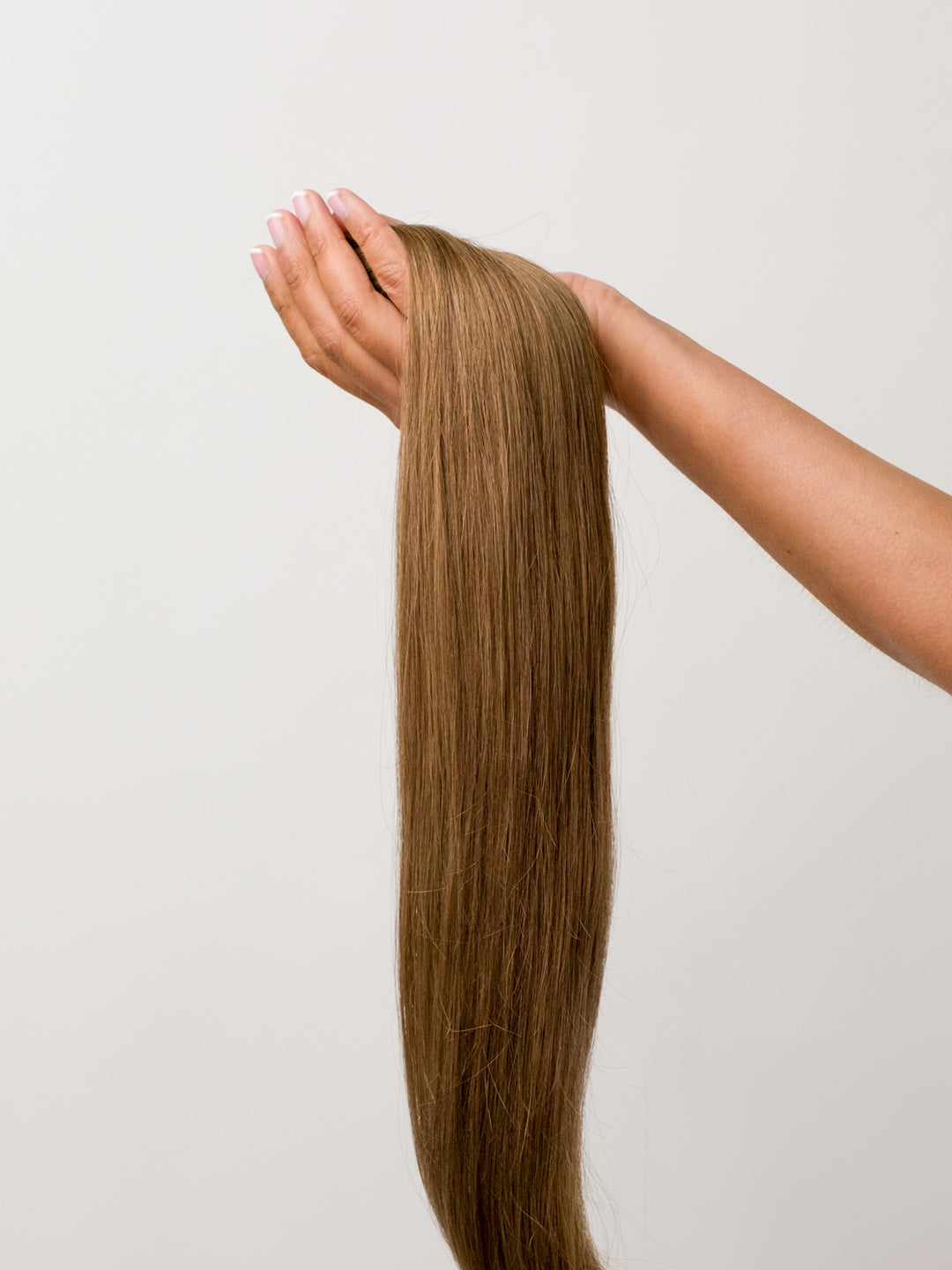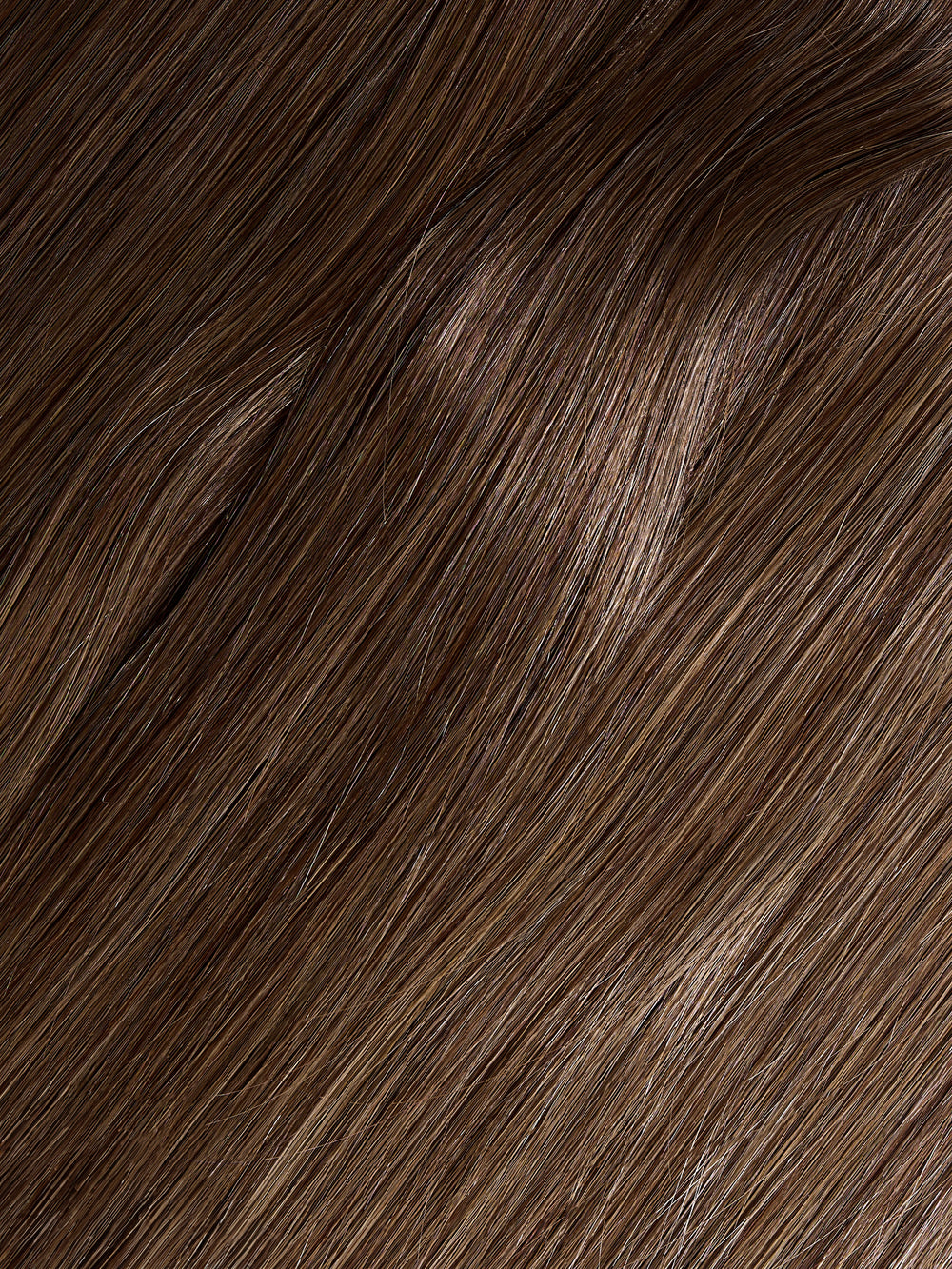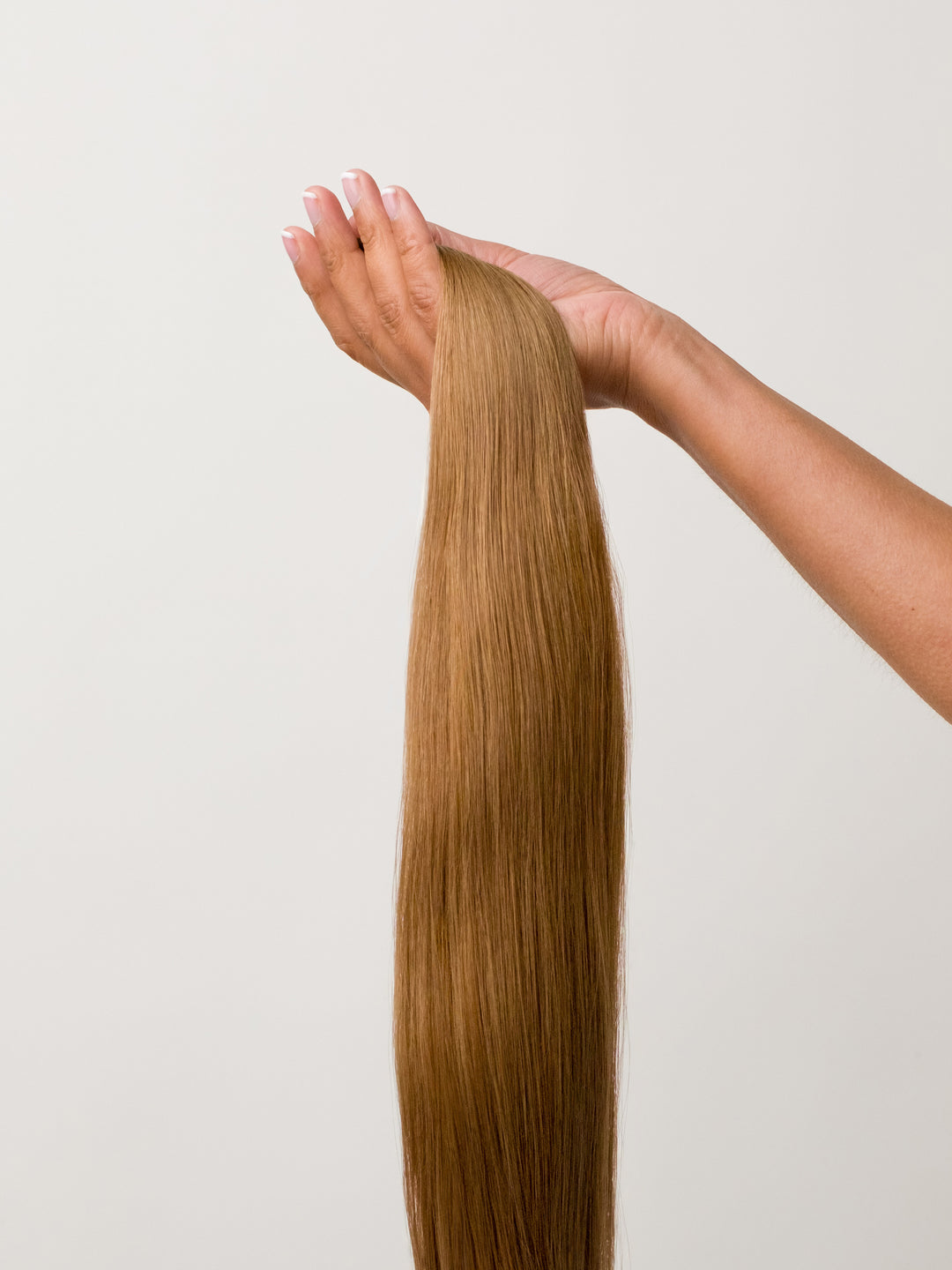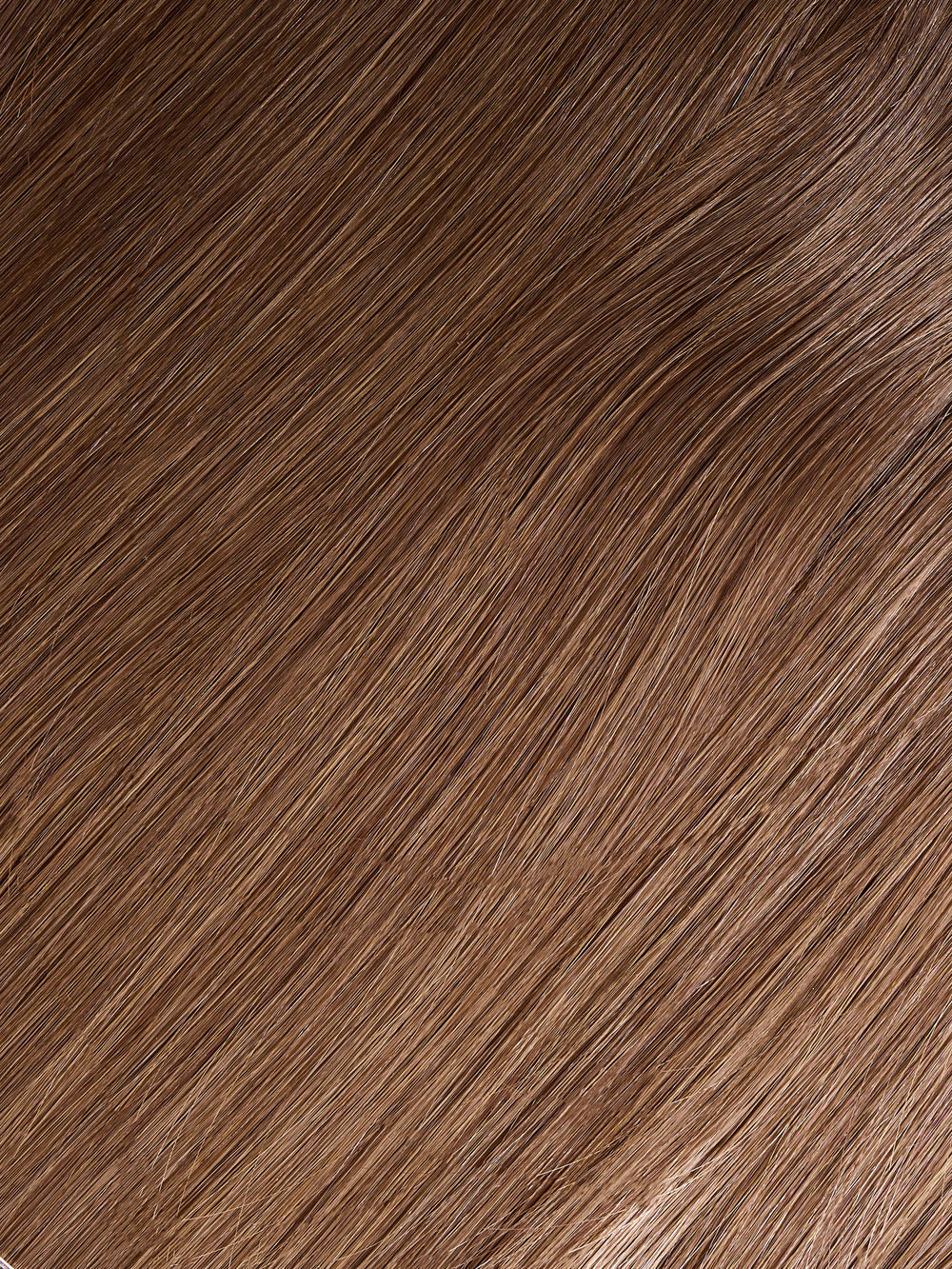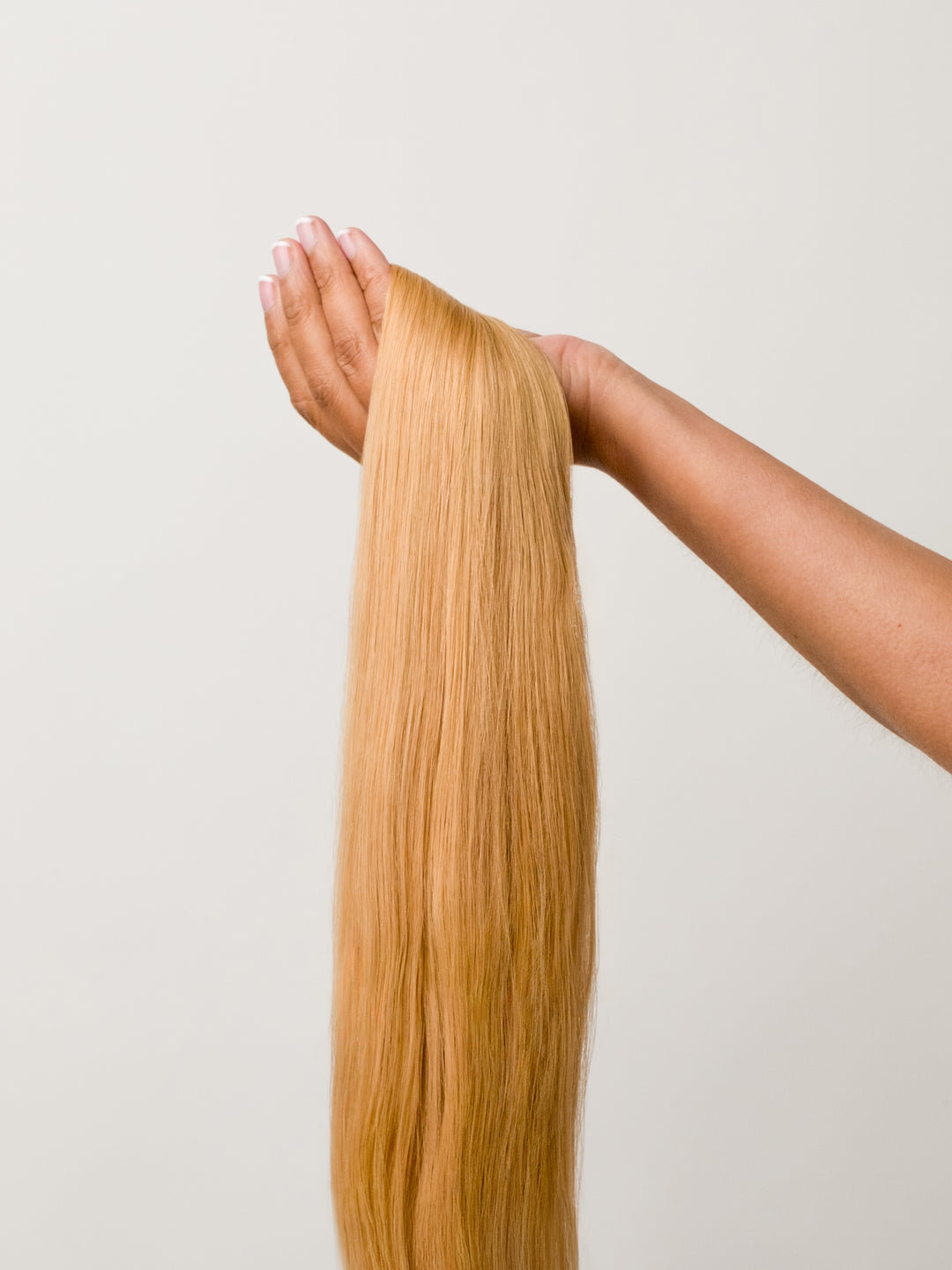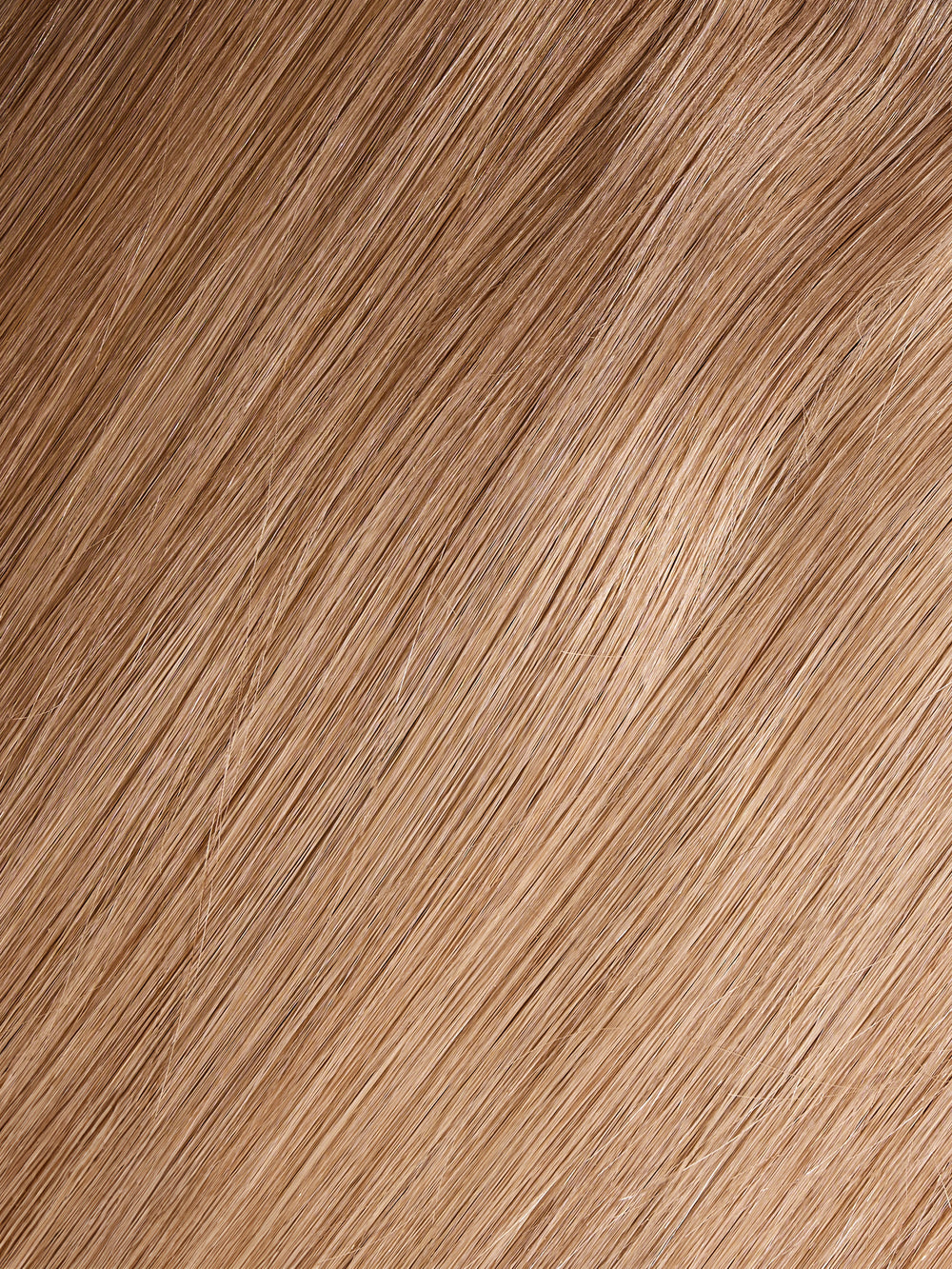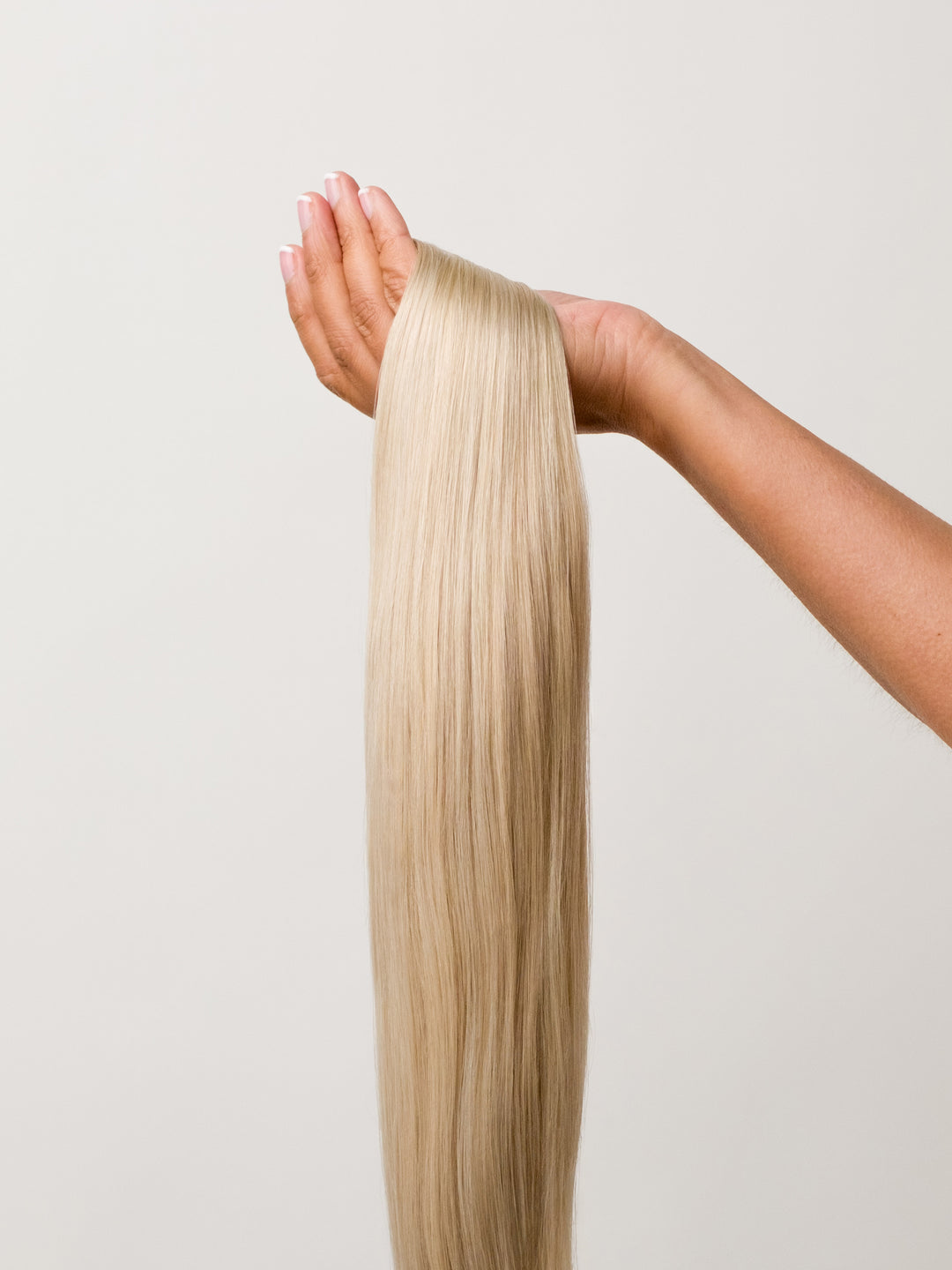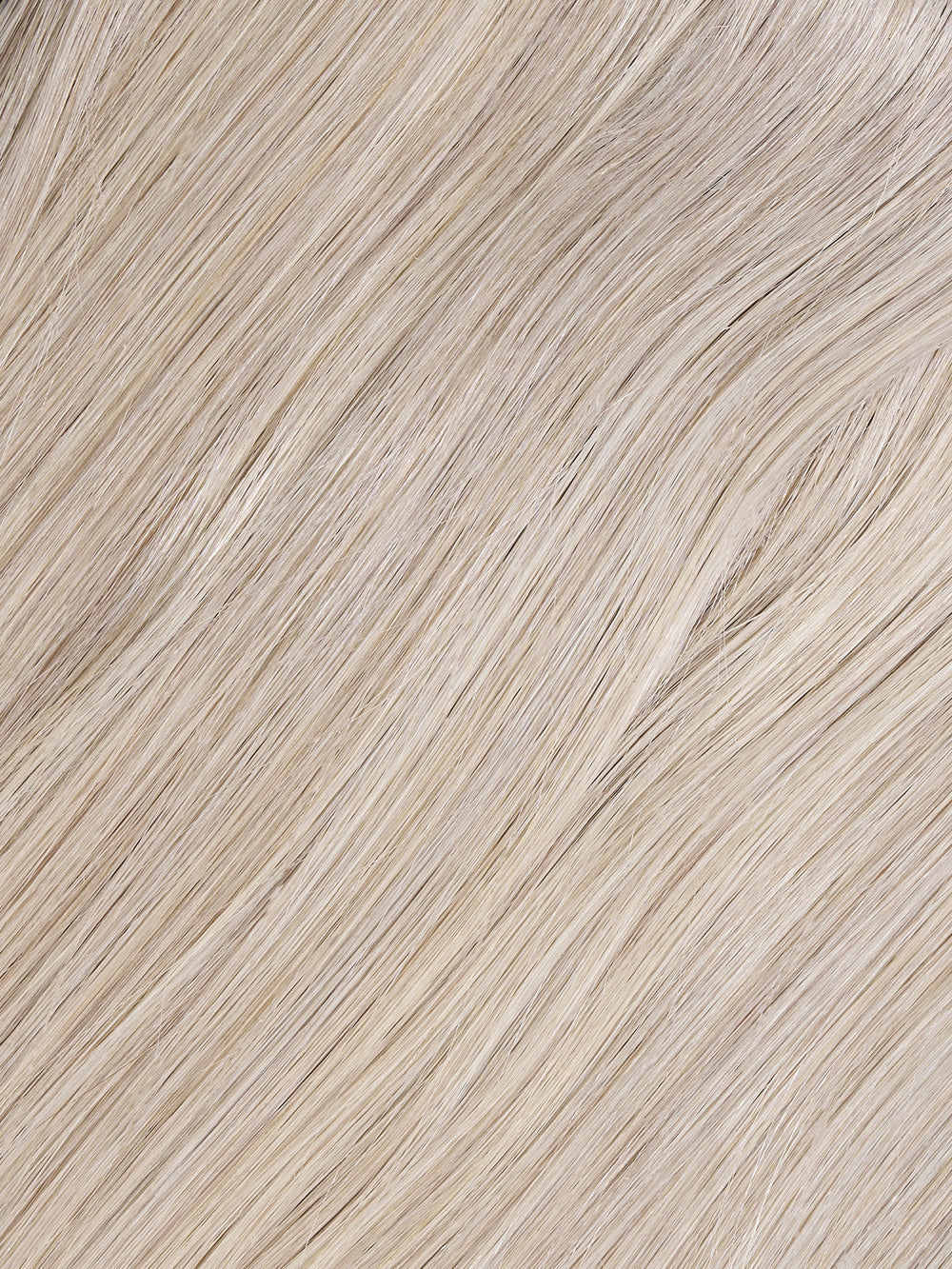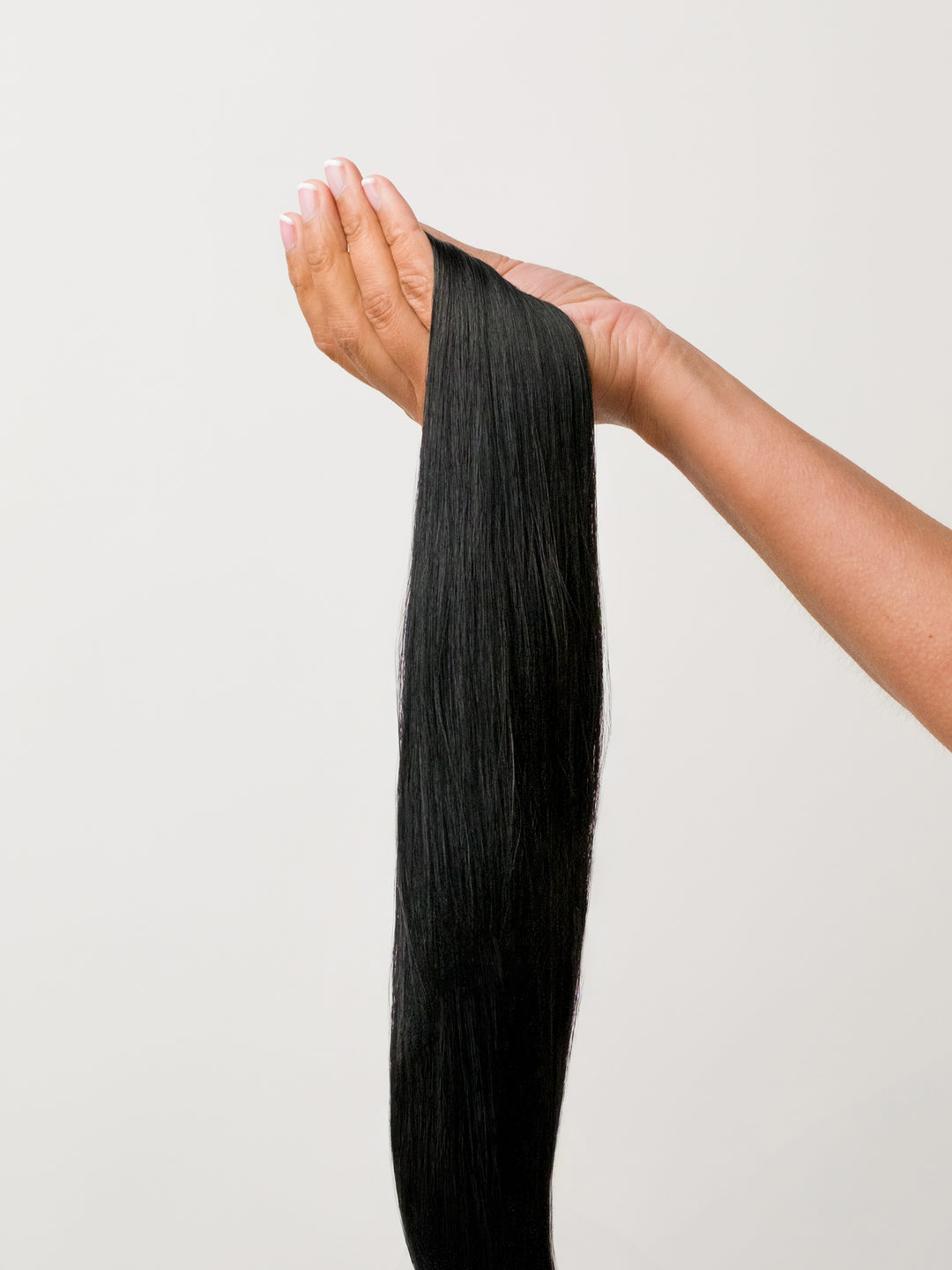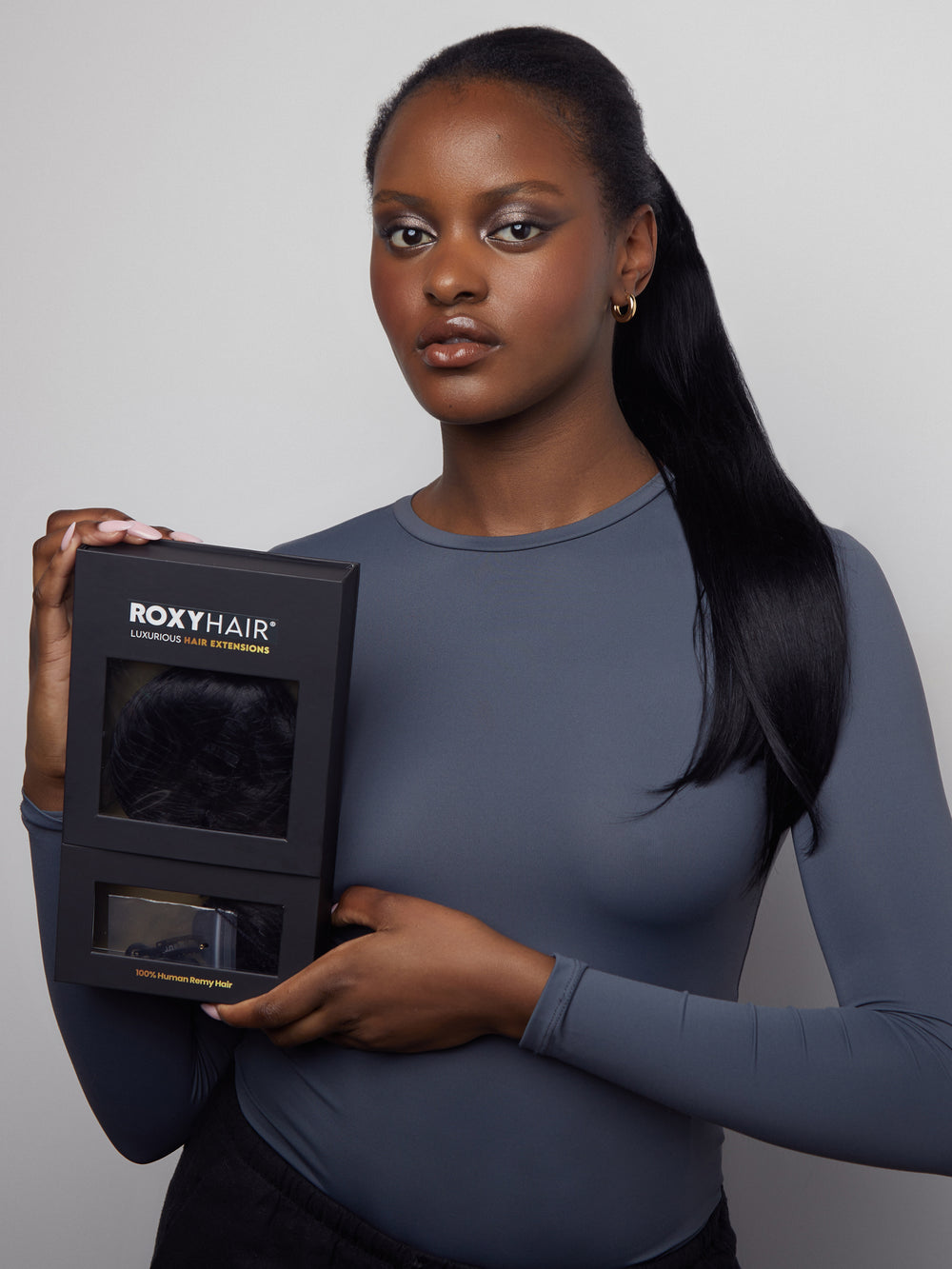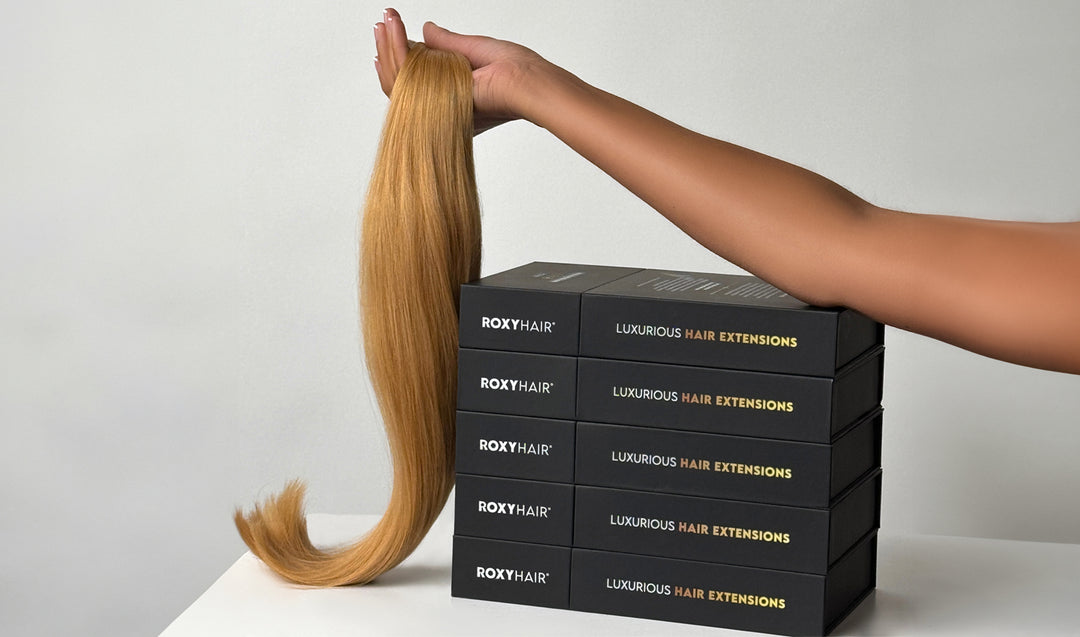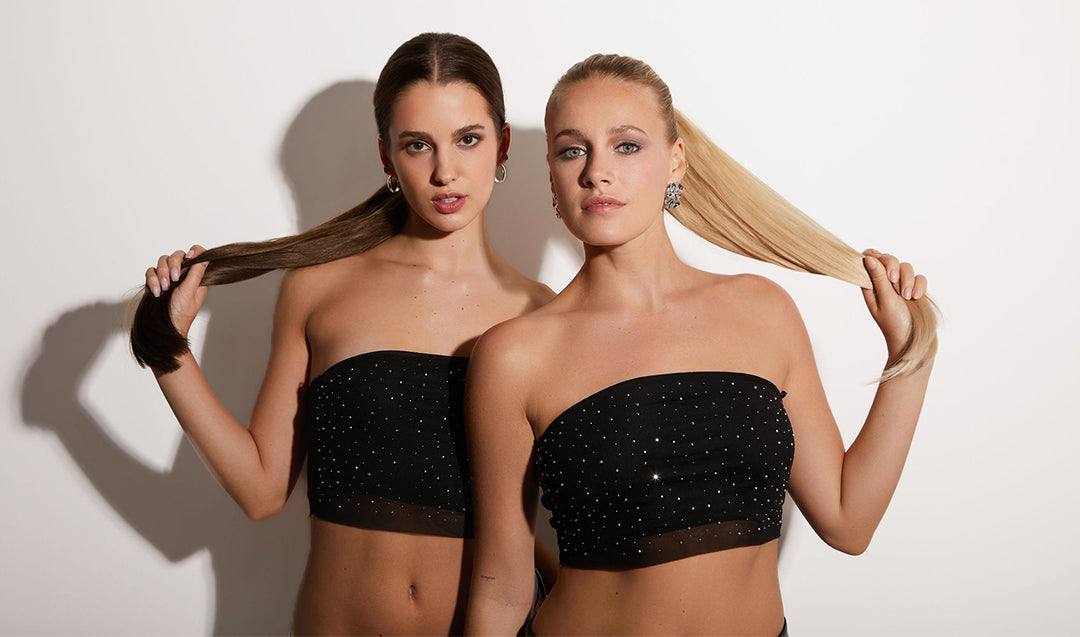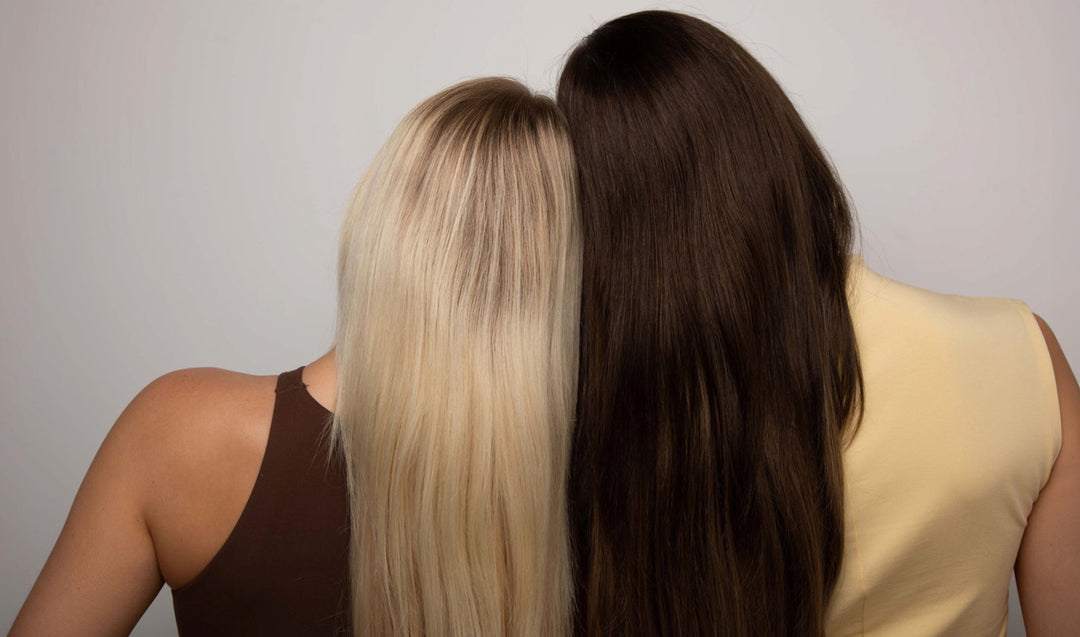Having long, luscious locks is a dream for many, but dealing with tangled hair extensions can quickly turn that dream into a nightmare. Matted, knotted extensions not only look unsightly but can also cause significant hair breakage and damage. Fortunately, with the right techniques and care, you can keep your extensions tangle-free and maintain their fabulous appearance.
In this comprehensive guide, we'll explore tried-and-true methods to prevent your extensions from turning into a tangled mess. From proper installation techniques to daily maintenance routines, we'll cover everything you need to know to keep your extensions looking their best. Whether you're a seasoned extension wearer or a newcomer to the world of hair extensions, this guide will equip you with the knowledge and skills to achieve tangle-free tresses.
Key Takeaways
-
Hair extensions tangle because of friction, dryness, improper installation, and low-quality hair
-
Different extension types like clip-ins, weaves, and micro-rings have different tangle issues
-
Proper prep like using clean, matching hair and securing extensions correctly helps prevent tangles
-
Gentle daily care like soft brushing and sulfate-free products keeps extensions smooth
Understanding Why Hair Extensions Tangle
Hair extensions can get really tangled up if you don't take proper care of them. There are a few main reasons why they get knotty:
-
Friction causes a lot of tangles. When the hair strands rub against each other - whether it's your natural hair or the extensions - it creates friction. This can happen from wind, brushing too rough, or even sleeping with your hair loose.
-
Dry hair is more prone to tangles. If your natural hair or the extensions are dry, the strands are more likely to snag on each other and knot up. Dry hair doesn't slide as smoothly.
-
Sometimes the extensions aren't put in properly. With permanent extensions especially, if the bonds or attachments aren't secured right, they can loosen up and cause neighboring strands to get twisted together.
-
Low-quality synthetic extensions or cheap hair tends to tangle more easily than good quality, real human hair extensions. The cheaper stuff usually doesn't have that outer cuticle layer that helps hair glide smoothly.
Shop Roxy Hair
Different extension types have different tangle issues:
-
Clip-ins and tape-ins don't rub against your natural hair as much, so they're less likely to tangle. But they can still get knotty if you don't store them right or if the hair quality is poor.
-
With weaves, braids, and permanent bonded extensions, the roots can really knot up if they aren't installed perfectly or if you don't maintain them well. Product buildup around the braids can cause tangles too.
-
The little beads they use for micro-ring extensions can loosen over time and lead to gnarly tangles.
Prepping and Wearing Hair Extensions Properly
There are some important things to keep in mind to avoid dry and damaged hair extension.
First off, you want to start with nice, clean hair. Any dirt or oil can make the extensions slip out faster. It's like trying to stick something to a greasy surface - it just won't hold well.
How you put the extensions in matters a lot too. There are different methods like clip-ins, tape-ins, or fusions. Each one has its own technique for sectioning off your hair to hide and secure the extensions properly.
To get that seamless, natural blend, you need extensions that match your hair's texture and color as closely as possible. Don't be afraid to get a professional colorist involved if you need help finding the perfect shade match.
Once the extensions are in, you may need to do a bit of trimming to blend the lengths together with your own hair. Think of it like getting your usual trim!
When it comes to daily care, be gentle. Extensions require a soft touch. Always start brushing from the ends and work your way up slowly. Use brushes and combs specifically made for extensions to avoid snagging.
And finally, wash with sulfate-free, extension-friendly hair conditioner and shampoo. Regular shampoos and conditioners can leave extensions dried out and frizzy.
Please check here to see what is the proper hair care before installation
Protecting Extensions Free from Environmental Factors
Your extensions are like your natural hair - they can get damaged by things in the environment. Here are some tips to protect your extensions and keep them looking great:
Minimize Exposure to Wind, Salt Water, and Chlorine
These elements can dry out your extensions, cause fading, and make them tangle. If you know you'll be exposed to any of these, try to wear a protective hairstyle like a braid or bun. And be sure to rinse your hair with clean fresh water afterwards.
Use Protective Hairstyles
When you're not wearing your hair down, consider wearing it in a braid, bun, or ponytail. This will help protect your extensions from tangling and wind damage.
Cover Extensions When Exercising or Swimming
Sweat and chlorine can damage your extensions. If you're going to work up a sweat or go swimming, it's a good idea to wear a swim cap or bandana to cover and protect your hair extensions.
Product Recommendations for Smooth, Snag-Free Extensions
Having nice extensions regularly that don't get tangled or snagged is all about using the right products and taking good care of them. Here are some tips to keep your extensions smooth, healthy, and tangle-free:
Shampoos and Conditioners:
-
Use a gentle shampoo without sulfates. Regular shampoos can be too harsh and dry out your extensions. Look for ones with ingredients like coconut oil, aloe vera, or shea butter to add moisture.
-
Use a really hydrating conditioner. This helps keep extensions soft and easy to manage. Look for conditioners with keratin, panthenol, or argan oil to strengthen and smooth the hair.
Styling Products:
-
Leave-in conditioner can prevent frizz and tangles during the day. Get a lightweight one so it doesn't weigh your hair down.
-
If heat styling, always use a heat protectant spray first. This stops heat damage that can cause split ends and breakage.
-
Detangling sprays make brushing way easier. They help loosen knots so you can brush without breaking the hair.
Tools:
-
Get a seamless weave brush with rounded, soft bristles that won't snag or pull your extensions. The bristles are also gentle enough for your scalp and friendly to natural oils.
-
A wide-tooth comb is great for detangling wet extensions. Start at the ends and work up to avoid pulling.
-
Use a microfiber hair towel instead of regular towels which can rough up and damage extensions.
At-Home Deep Conditioning:
-
Make your own hair mask with avocado, olive oil, and honey. Mix it up, apply to extensions (focus on ends), leave on for 30-60 mins, then rinse.
-
You can also buy pre-made hair masks made specifically for extensions. Look for a really moisturizing one.
Nighttime Care to Prevent Morning Matting
Waking up with tangled, matted extensions is so frustrating. But there are some things and hair products you can do at night to prevent morning messes and keep your extensions looking great. First, use protective styles to contain your hair and minimize friction. Keep your hair in a braid or twist your hair before bed - try loose french or dutch braids, cornrows, or just twist sections for a looser hold. The pineapple updo is another good option where you gather your hair loosely on top of your head and secure it with a soft scrunchie or fabric tie. Keeping your hair up and off your shoulders reduces tangles caused by friction.
Speaking of friction, avoid sleeping with wet hair and start using silk or satin pillowcases is key since the smooth surface means less matting and knots as you move around at night. Hair bonnets are great too - these fabric caps fully enclose and protect your whole head of extensions so they don't rub against the pillows and sheets while you toss and turn. Just be sure to avoid tight hair ties which can pull on your extensions and potentially cause breakage. Stick to soft, loose scrunchies or fabric hair ties instead.
Summary
Keeping your hair extensions tangle-free requires some extra care and the right techniques. Be gentle when brushing and styling them. Use the proper hair products made specifically for extensions - look for moisturizing shampoos, conditioners, and leave-in treatments. At night, protect your extensions by braiding or wrapping them up and sleeping on a silk pillowcase. With a little extra attention and the tips from this guide, you can enjoy beautiful, knot-free extensions for weeks to come. Taking good care of your Roxy Haair extensions from the start will help them look their best and last longer.
Frequently Asked Questions (FAQs)
Why do hair extensions tangle so easily?
Extensions tangle because of friction, dryness, and improper installation.
How often should I brush my extensions?
You should gently brush extensions 1-2 times per day, starting from the bottom and working your way up. Use a loop soft bristle brush or wide-tooth comb, and avoid using a fine tooth comb.
Is it okay to go to sleep with extensions?
Yes, but prep them first by braiding or wrapping them up. Use a silk/satin pillowcase or bonnet to avoid friction while you sleep.
How do I detangle extensions without damaging them?
Use a detangling spray, water based hair serum, or leave-in conditioner. Gently work out knots with your fingers before brushing. If severely tangled, see a professional stylist.
When should I replace my extensions?
Replace them every 6-8 weeks, or sooner if they become excessively tangled, matted or dried out despite your best efforts.





